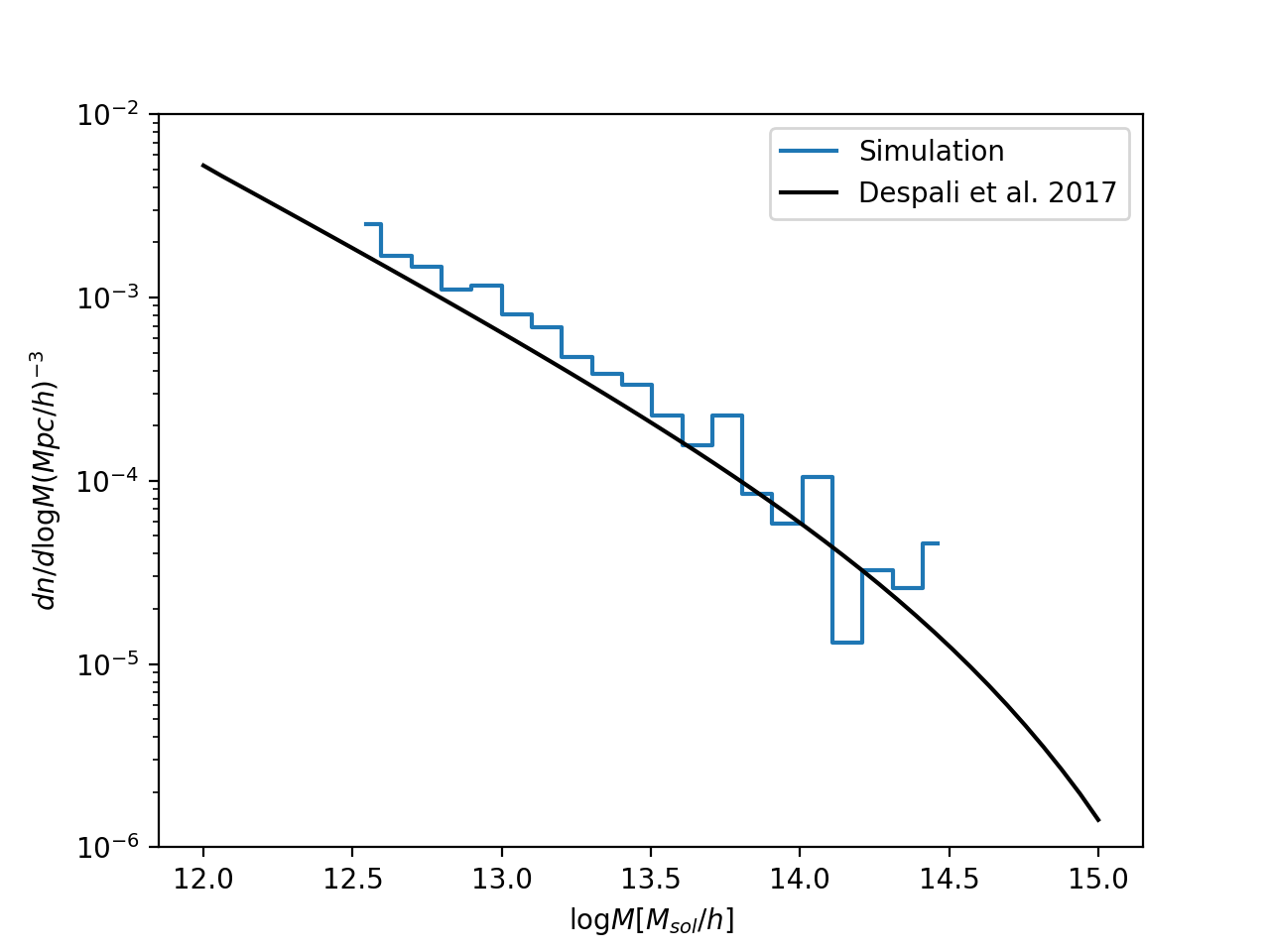Nicole Drakos
Research Blog
Welcome to my Research Blog.
This is mostly meant to document what I am working on for myself, and to communicate with my colleagues. It is likely filled with errors!
This project is maintained by ndrakos
Test Simulation
Here I’m testing my simulation setup on my laptop using \(128^3\) particles.
Parameters
I am using the set-up discussed here with the following modifications:
1) \(128^3\) particles corresponds to level 7 in the MUSIC ICs
2) The softening length is now \(\epsilon = 17.96 \, h^{-1} {\rm kpc}\)
3) TimeOfFirstSnapshot = 0.047619 (redshift 20)
4) TimeBetSnapshot = 1.06278 (I think this corresponds to 50 snapshots between redshift 20 and 0, according to my previous post, but I will check this)
Results
I did end up with 50 snapshots, so I think I did interpret the parameter TimeBetSnapshot correctly (yay!). The files are each \(58.7\) Mb, so I assume \(2048^3\) particles will result in snapshots that are \(\sim 0.25\) Tb each.
Here is a rough animation of the simulation:
Note to self: I used the command “ffmpeg -f image2 -r 10 -i snapshot_%03d.png -vcodec mpeg4 -y wfirst128.mp4” to make the video, but that wouldn’t play in the browser, so I converted it using “ffmpeg -i wfirst128.mp4 -vcodec libx264 -acodec aac wfirst128_2.mp4”
And then if I run AHF and plot the halo mass function at redshift zero:

This looks decent, but I am wondering why (1) the simulation is slightly above the expected line and (2) why it doesn’t look incomplete at low masses (see, e.g., this post for comparison).
Conclusions
Overall this looks pretty good. I want to get this running on Pleiades, then do a \(1024^3\) run. Once I’m happy, I’ll submit the \(2048^3\) job.